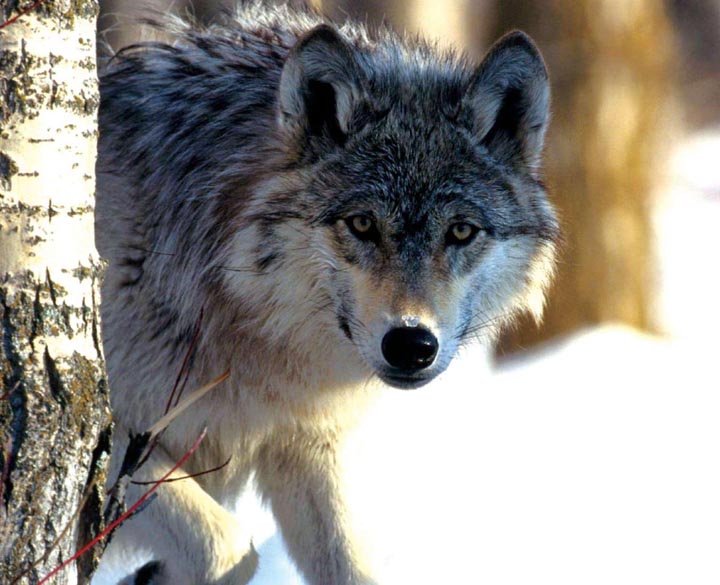





Wo lve s a re th e largest member of the canine family. These carnivores live in North America, Eurasia, and North Africa. There are two species of wolves: gray wolf and red wolf. There are 38 subspecies of gray wolf. The red wolf is smaller and has shorter fur than the gray wolf. Unfortunately, habitat loss led the red wolf to the edge of extinction,and there are no more than 100 in the wild now.
Wolves vary greatly in size. While red wolves rarely weigh more than 13 kilograms, gray wolves can reach 80 kilograms! The fur of most wolves is white, black, or gray and they live in family oriented groups, called packs. These packs are composed of the alpha male, alpha female, and their offspring. Packs can have more than 10 members.
Wolves are at the top of the food chain and do not have natural enemies. They are meat eaters who hunt goats, sheep, deer, moose, and other larger and smaller prey. Their territory designated for hunting can be up to 1000 square kilometres. These amazing animals have huge appetites and can eat over 8 kilograms of food at a meal. That's like a person eating 100 hamburgers for dinner!
Since wolves' diet is mostly meat and bones, they have very strong jaws with 42 sharp teeth, designed for stabbing and crushing. Wolves also have excellent eyesight. Although they cannot distinguish colours, their eyes are very sensitive to movement. They can smell about 100 times better than people and can easily smell animals 2.5 kilometres away! Their sense of hearing is also remarkable — they can hear animals up to 16 kilometres away in an open space!
Vocalization is very important to wolves. They often howl together and it is used for communication within the pack, to tell other packs they are crossing into their territory, or to scare away unwanted lonely wolves.
All members of a wolf pack take care of the young. When the hunters return to the den, they often regurgitate food for the pups.
Wolves live up to 13 years in the wild, and up to 16 years in captivity.
Word List
carnivores : meat eaters
canine : dog
den : home for wolves
regurgitate : vomit, bring up from the stomach
You Practice
I. Answer the following questions.
1) What are three amazing facts about wolves?
2) Why do you think wolves have no enemies?
3) Would you like to be a wolf? Why or why not?
4) What other animals do you know that live in a family oriented group?
5) Do you like wolves? Why or why not?
II. Word power—Use these words from the reading in sentences of your own.
1) regurgitate ____________________________________________
2) pack _________________________________________________
3) canine ________________________________________________
4) alpha ________________________________________________
5) territory ______________________________________________
III. True / False / Not Given—Write T if the sentence is true, F if the Sentence is not true, or NG if there is no information about the sentence.
____ 1) The gray wolf is almost extinct.
____ 2) Only the alpha wolves take care of the young.
____ 3) Wolves eat mostly plants.
____ 4) Wolves cannot see very well.
____ 5) Wolves are very social animals.